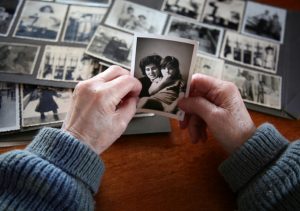Why Do Break Ups Hurt Some People More than Others?
 How Attachment Style Affects Break Ups
How Attachment Style Affects Break Ups
Our attachment style is formed early in our lives between us and our influential caretakers. These attachment patterns become internal working models that affect how we relate as adults in our romantic relationships. Securely attached children grow up feeling “safe, seen and soothed,” according to Dr. Daniel Siegel, co-author of Parenting from the Inside Out. Insecure attachments can lead a child to one of three other attachment styles: avoidant, anxious or disorganized. To understand how attachment style can influence a break up, it’s helpful to know a little bit about each of these categories of attachment.
Avoidant Attachment: An avoidant attachment can form when a parent is emotionally unavailable. Children in this environment often learn that the best way to get their basic needs met is to act like they don’t have any. As an adult, they may form a dismissive avoidant attachment with a romantic partner, in which they have the tendency to act aloof or resistant to closeness.
Anxious Attachment: A child who forms an ambivalent/anxious style of attachment usually has a parent who is sometimes available and nurturing and other times insensitive or intrusive. These children learn that if they cling or stay focused on the parent, they eventually get their needs met. As adults, people with this pattern may form an anxious preoccupied attachment, in which they feel needy or even desperate toward their romantic partner.
The attachment style we had as a child makes a difference in how we feel in our adult relationships, a subject I talk more about in the blog “How Your Attachment Style Impacts Your Relationship.” It informs who we choose to date, what triggers us and how we interact and react with our partner. It’s easy to see how these attachment patterns might influence our feelings and behaviors in the course of a relationship, but it also affects how we feel when the relationship ends. A Pace University study reported that “individuals measuring high in rejection sensitivity and anxious attachment style experienced the most adverse effects to romantic break-up and rejection.”
This is not surprising, as someone who forms an anxious preoccupied attachment is more likely to feel insecure or have deep fears of being rejected. In a certain sense, they may attach their identity to their partner. They don’t do this intentionally, but instinctively, because it can feel like a matter of survival. As a child, they had to cling to their parent to get their needs met, which at that time, was indeed a matter of survival. As adults, they may feel like their relationship gives them their sense of self, so breaking up would mean losing themselves and not just their partner.
Our emotional reaction to break ups may have a lot to do with our attachment style and emotional intelligence, but the good news is that neither are fixed. We can develop a secure attachment and heighten our level of emotional intelligence at any age. One essential way to do this is by making sense of our story. In an online course I’ll be co-leading with Dr. Daniel Siegel, we will talk about how creating a coherent narrative of our experiences can help us to build healthier, more secure attachments and strengthen our own personal sense of emotional resilience.
One of the proven ways to change our attachment style is by forming an attachment with someone who had a more secure attachment style than what we’ve experienced. We can also talk to a therapist, as the therapeutic relationship can help create a more secure attachment. We can continue to get to know ourselves through understanding our past experiences, allowing ourselves to make sense and feel the full pain of our stories, then moving forward as separate, differentiated adults. In doing this, we move through the world with an internal sense of security that helps us better withstand the natural hurts that life can bring.
As adults, we don’t have the same needs we had as a child, so when emotions like intense jealousy, insecurity, self-doubt and anxiety start to seep in, it’s valuable to think about where these feelings originated. When we feel stirred up in our relationship, knowing our attachment style can help us start to separate the past from the present. When a triggering event like a break up occurs, we can make connections between our current emotions and the past relationships and events from which they source. In doing this, we can free ourselves to feel more secure in ourselves and our present lives. We can start to separate from the insecurities and self-protective defenses that served us as children but hurt us as adults. We’ll soon learn that we can survive rejection without having to give up on love altogether. We can feel complete within ourselves, while still looking for someone with whom we can feel secure.
Join Dr. Lisa Firestone and Dr. Daniel Siegel for the online course “Making Sense of Your Life: Understanding Your Past to Liberate Your Present and Empower Your Future.”
Tags: adult attachment, attachment, attachment patterns, attachment styles, break-up, break-ups, overcoming break-ups, relationship advice, relationship issues, relationship problems, relationships









Thanks a lot for good insights into human psychology, It has really helped me in my own life, Thanks a lot.
Thanks very much for this highly informative piece. Just one thing, in the section on disorganized attached, the word “bind” is missing a “d”:
As adults, they may have a fearful avoidant attachment, leaving them caught in a bin [d]; …